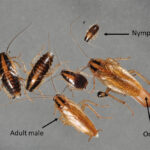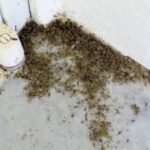As the temperature drops and frost threatens to settle in, gardeners often wonder: should you cover plants in cold weather? This common question pops up every winter. Whether you’re caring for tropical blooms or young vegetable sprouts, understanding when and how to protect your plants can make all the difference.
Why Plants Need Cold Protection
Plants, like people, have limits. Some can survive freezing nights, while others suffer damage or die. Factors such as plant type, how long the cold lasts, and your garden’s location (called a microclimate) all affect the need for protection.
Which Plants Need Covering?
Hardy plants, like winter vegetables and perennials, are built to handle light frost. But tender plants, including tropical species and seedlings, can’t withstand cold weather. These are the ones most likely to benefit from being covered.
How Cold Is Too Cold?
If it’s only briefly chilly, most plants are fine. But when frost sticks around for hours or temperatures dip below freezing, covering your plants in cold weather can prevent serious damage.
Ways to Cover Your Plants
- Mulch: Spread mulch around plant bases to keep soil warm.
- Row covers and cloches: Fabric or plastic shields trap warmth.
- Blankets or tarps: Use breathable materials and avoid direct contact with foliage.
Know Your Microclimate
Your yard’s layout matters. Areas near buildings or fences stay warmer. These spaces might protect plants naturally, so you may not need to cover them.
When Not to Cover Plants
Avoid using heavy, non-breathable materials. They can trap moisture and promote rot or fungus. Always remove covers during the day if temperatures rise.
Internal & Outbound Links
To learn how Florida’s changing weather affects plant care, read our blog about Florida’s weather patterns.
Need help keeping pests out during the cold? Visit our pest control services page.
For expert tips on plant protection, check out this University of Florida guide on cold protection for plants.
When Not to Cover
While protecting plants from cold is essential in many cases, there are instances when covering them might do more harm than good. If the covering material is too heavy or isn’t breathable, it can create excessive humidity, potentially leading to fungal diseases or rot.
Ultimately, whether you should cover your plants when it’s cold outside depends on several factors. Understanding the specific needs of your plants, the severity of the cold, and the microclimate of your garden are key considerations in making this decision.
Observation and experience will often guide you. Regularly monitoring weather forecasts, assessing your garden’s microclimates, and understanding the cold tolerance of your plants will help you make informed decisions about whether to cover them during chilly spells. Balancing protection with the risk of potential harm from covering is crucial in safeguarding your plants and ensuring their health during the colder months.









